The ideal design of a behavioral health staff station has long been a subject of debate. While historical designs have often overemphasized security and included a partial or full-height, glazed barrier between staff and patient, recent studies and anecdotal evidence have shown that a design that retains openness between staff and patients contributes to a more normalizing, stress-reducing environment, which improves patient outcomes.
Since the staff station is usually in a prominent location within primary living and interaction spaces, the importance of and perception its design conveys to patients should not be underestimated. The Page/EYP team has worked with clinicians, hospital leaders and patients at multiple facilities to hone and improve the design of behavioral health staff stations. The ideal design varies depending on facility parameters and the station’s location. Patient care modalities, demographics, population, age, diagnosis, supervision and security plans and other factors help determine if a design is appropriate.
For the purposes of this article, the assumed setting is an inpatient behavioral health facility with largely mobile patients and a moderate- to high-level of safety and security. We also have found most of these station designs also can apply to outpatient settings, civil and forensic facilities, and short- and long-term care. Design might benefit from some adaptation in specialized facilities, such as pediatric behavioral health, low-acuity settings, or where a care model is significantly different.
Staff station function
The function of the staff station in behavioral health is different than a staff station in a medical hospital setting. In a behavioral health facility, effective treatment largely occurs through staff interactions with ambulatory patients throughout the facility as opposed to visits to patient bedrooms, which are common in medical healthcare settings.
Bedroom visits are less encouraged in behavioral health facilities to allow for patient privacy and encourage patient socialization in public spaces. From a psychiatric treatment standpoint, the general belief is that the best treatment occurs when the care team is out on the floor engaging with patients.
To facilitate this approach, behavioral health staff stations are used less for central scheduling and logistical functions, as in traditional healthcare, and more for observation, patient communication and local control and conflict management. As a result, the design relies less on technology for administrative tasks and more on monitors and controls that help ensure and maintain safety, security and smooth functioning, including the control of entrances and exits, conflicts and life-safety response.
Research shows more effective treatment occurs when patients and staff are aware that measures are in place to ensure safety, which reduces stress levels. This stress reduction is achieved through safety provisions in design and the awareness that observation is being provided.
A preferred location for a behavioral health staff station is a central spot accessible to a secure staff area with lines of sight into patient areas, such as day rooms, bedroom corridors, outdoor patient areas, multi-purpose rooms and doors to seclusion suites, medication rooms and other patient activity areas.
Specific designs can vary based on the department the staff station serves. A more enclosed design might be desired at safety-sensitive locations, such as main hospital entrances, emergency departments and admissions suites. Conversely, therapeutic advantages could be leveraged by a more open design at highly supervised locations or areas of higher patient privilege, such as treatment malls. The following design goals assume a baseline middle-of-the-road scenario, where openness and non-institutional messaging are important, but staff safety remains a concern.
Staff station design goals
Clinicians say the primary functions of staff stations in patient living units include:
- observation, both visual and via security camera
- control of doors and hardware
- communication with security staff and others
- monitoring of emergency notifications, such as fire alarms.
The following design goals aim to promote safety and healing:
- Maintain open staff and patient connection and sightlines at face level.
- Provide physical separation between patients and staff below the head and shoulders.
- Discourage climbing and jumping.
- Avoid sharp corners and places to grab or hoist.
- Locate staff devices out of patient reach.
- Avoid flat counters on which to place items or stand.
- Follow anti-ligature design practices.
- Avoid removable or weaponizable items.
While no open design can fully guarantee safety in all scenarios, careful attention to these criteria can significantly maximize safety. A prudent station design that reduces stress and promotes healing contributes to positive patient outcomes.
Profile and height
The profile of a successful open secure staff station maintains easy eye-to-eye communication between staff and patient while discouraging physical contact and providing a safety barrier.
Page/EYP worked with behavioral health clinicians nationally to develop and review customized desk profiles, heights and widths, including an analysis of typical body dimensions, including shoulder and waist heights and reach ranges. Considerations included client-desired staff seating types and eye levels that enabled good unit observation and staff-to-patient eye contact for average height staff while avoiding a height advantage on either side.
Section profiles included a backward-sloped vertical face to dissuade attempts to climb and a rounded top to discourage inadvertently placing items that could be thrown or weaponized on the counter. With no corners on the desk, resulting in curves in both plan and section, a thermoformed solid surface finish enables construction of this safe geometry while providing a durable, highly cleanable finish.
In 2021, Page/EYP and construction manager Gilbane constructed life-sized physical mockups for an in-person review and testing with clinicians at Central State Hospital in Petersburg, Virginia. These mockups, made largely of wood and foam-core board, were tested, moved and deconstructed to determine the dimensions clinical staff felt produced the best combination of safety, observation and patient-staff visual connectivity. Through this exercise and previous exercises with clients in Missouri and Maryland, the horizontal separation dimension of 48 inches and an overall staff counter height of 54 inches was selected. This height worked in conjunction with a 7-inch riser on the staff side produced the desired eye level for staff. A full mockup of this design is under construction for further review before staff stations for the facility’s 12 living units are built.
Control and monitoring
In addition to the desired section profile, staff station design needs to accommodate control and monitoring functions to safely provide door access control while minimizing unnecessary distractions. Critical control functions include security monitors, door controls, intercom controls, fire alarm messaging, paging and a duress button.
Many functions located at a traditional healthcare nurses’ station, including phones, internet and administrative function software, might be better located at a different staff location in a behavioral health setting, emphasizing that the central staff station attendant is focused on local observation, safety, control and team communication.
As behavioral health design continues to evolve to seamlessly integrate safety and therapeutic treatment, custom-designed elements can help. The open, secure staff station is another step on the path toward a more humane and stress-reducing setting for patient healing and supporting staff who perform this critical work.
Eric Kern is senior project director for behavioral health with EYP, a Page company.
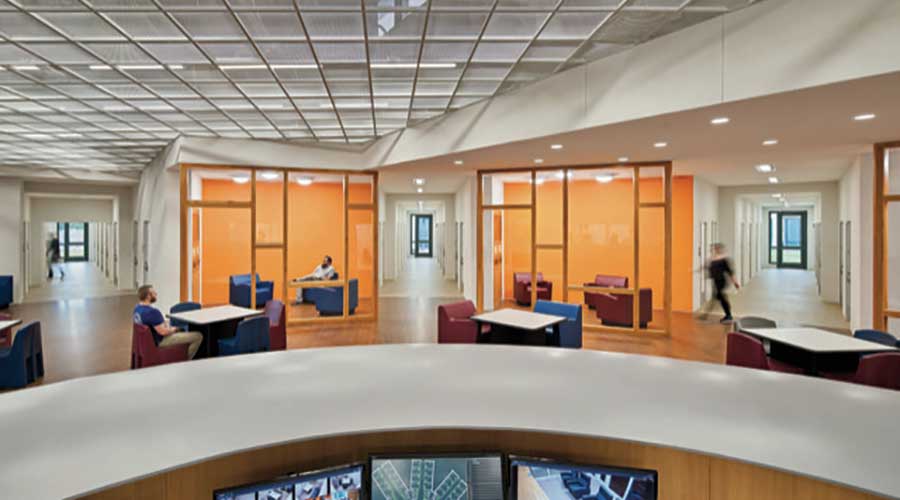
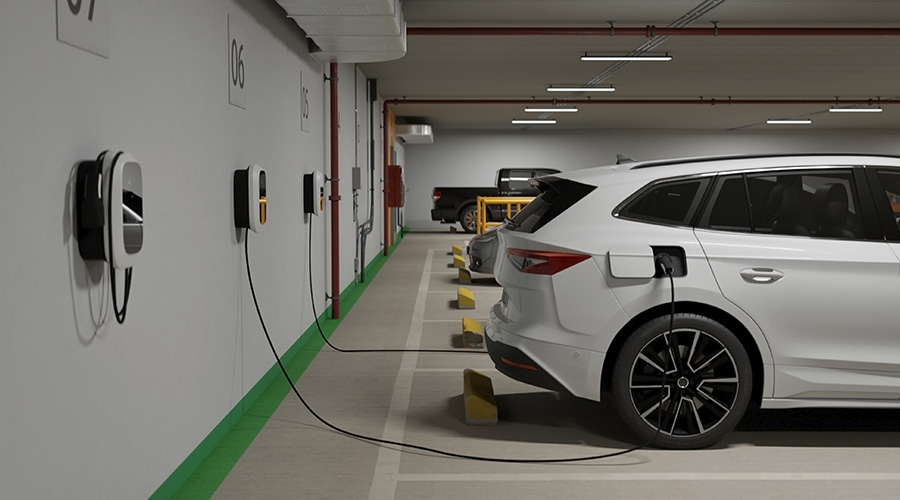 EV Charging Stations: Planning for Safety, Convenience, Expansion
EV Charging Stations: Planning for Safety, Convenience, Expansion Why Ambulatory Surgery Centers Are Turning to Dedicated HVAC Systems
Why Ambulatory Surgery Centers Are Turning to Dedicated HVAC Systems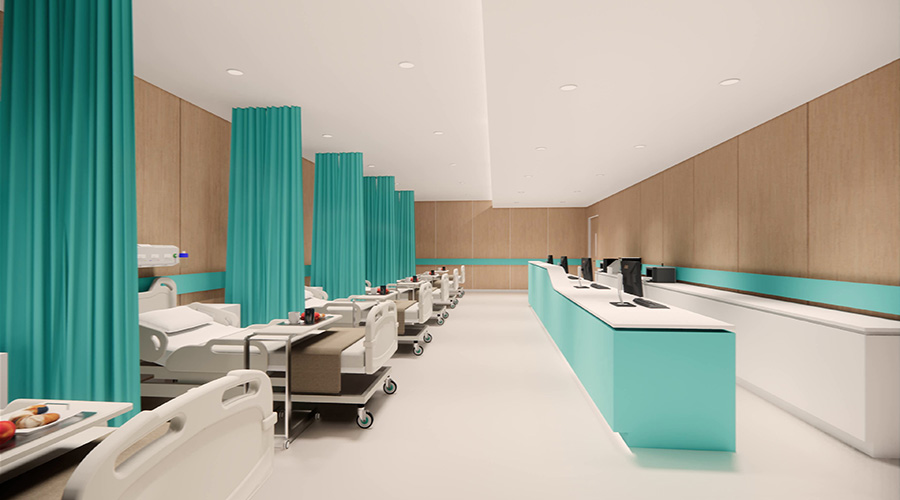 Ground Broken on UW Health University Row Medical Center
Ground Broken on UW Health University Row Medical Center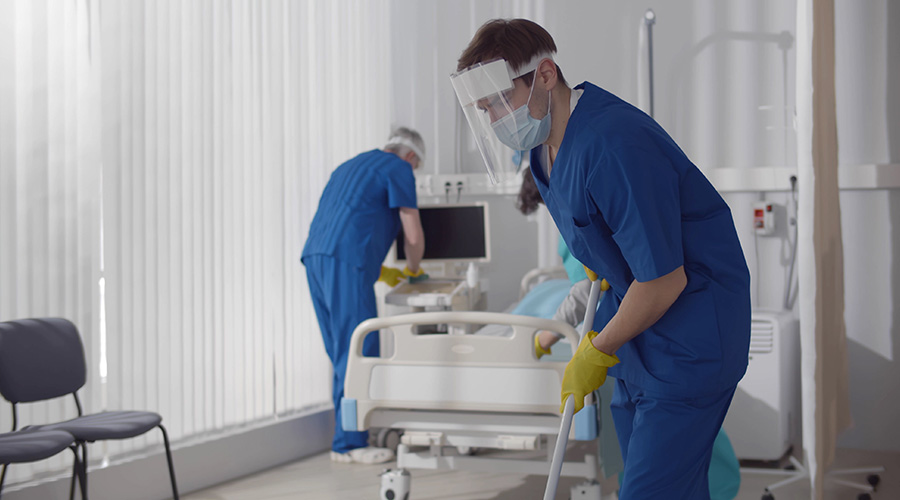 Better, More Thorough Cleaning Saves Lives
Better, More Thorough Cleaning Saves Lives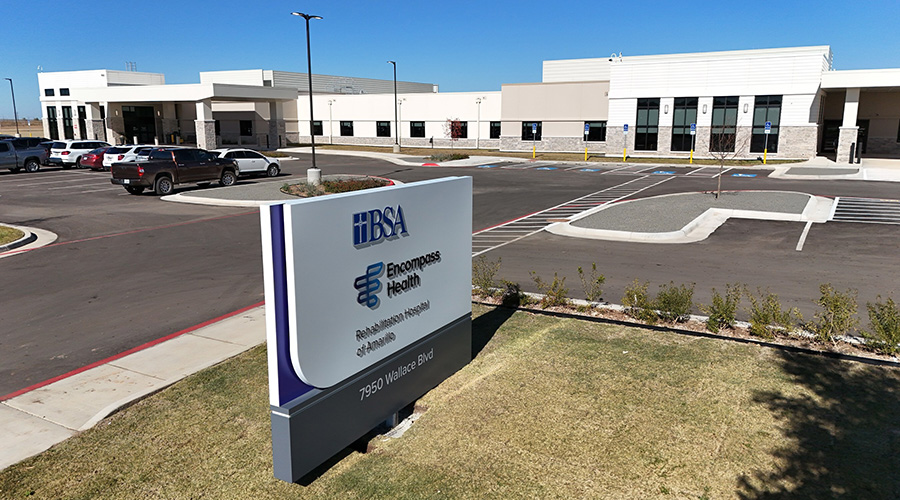 Encompass Health Opens the Rehabilitation Hospital of Amarillo
Encompass Health Opens the Rehabilitation Hospital of Amarillo